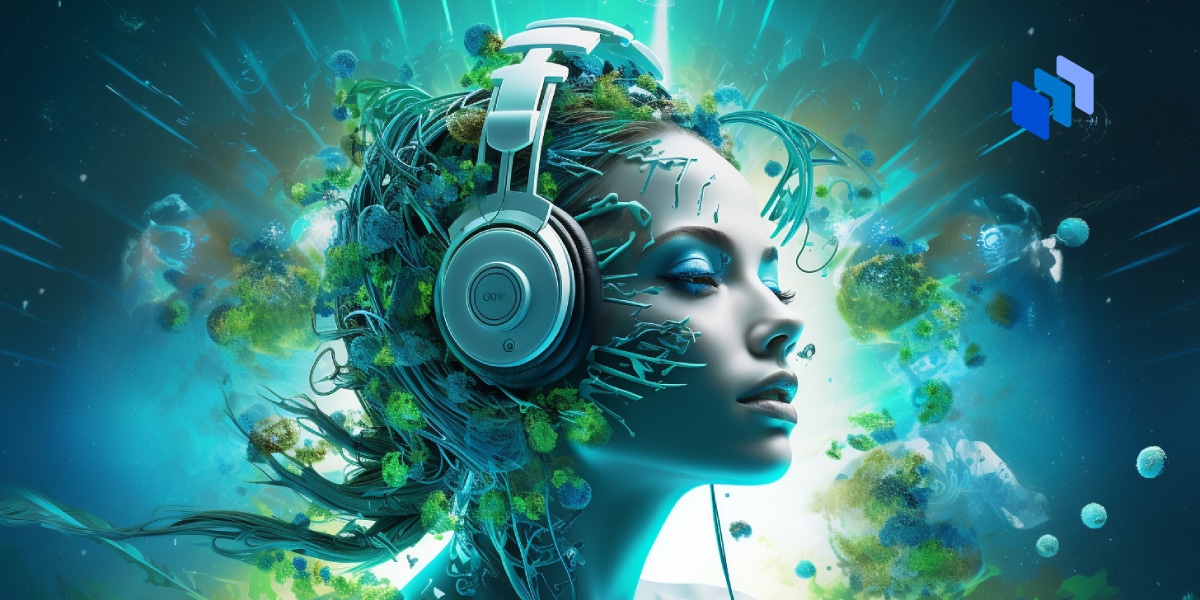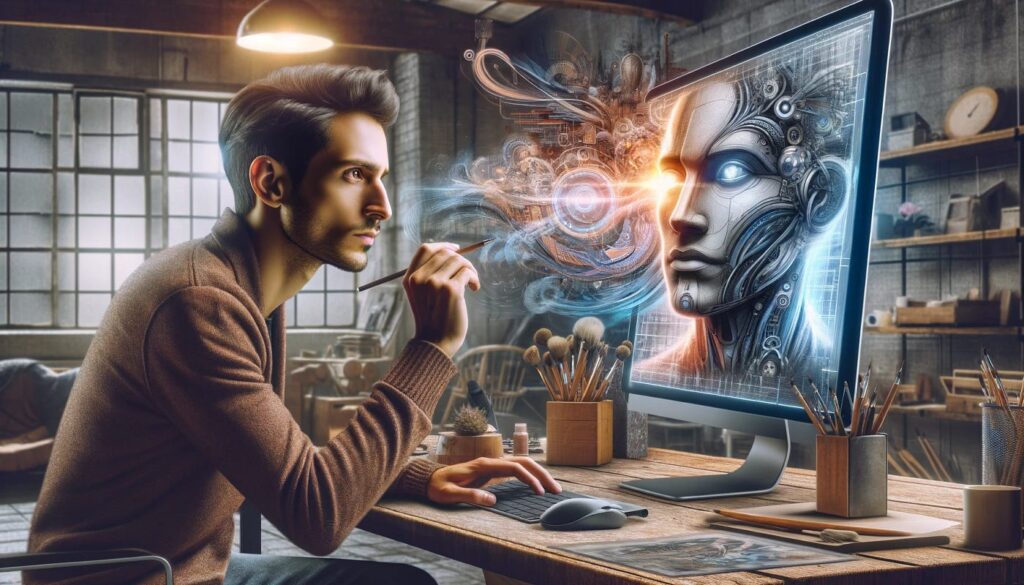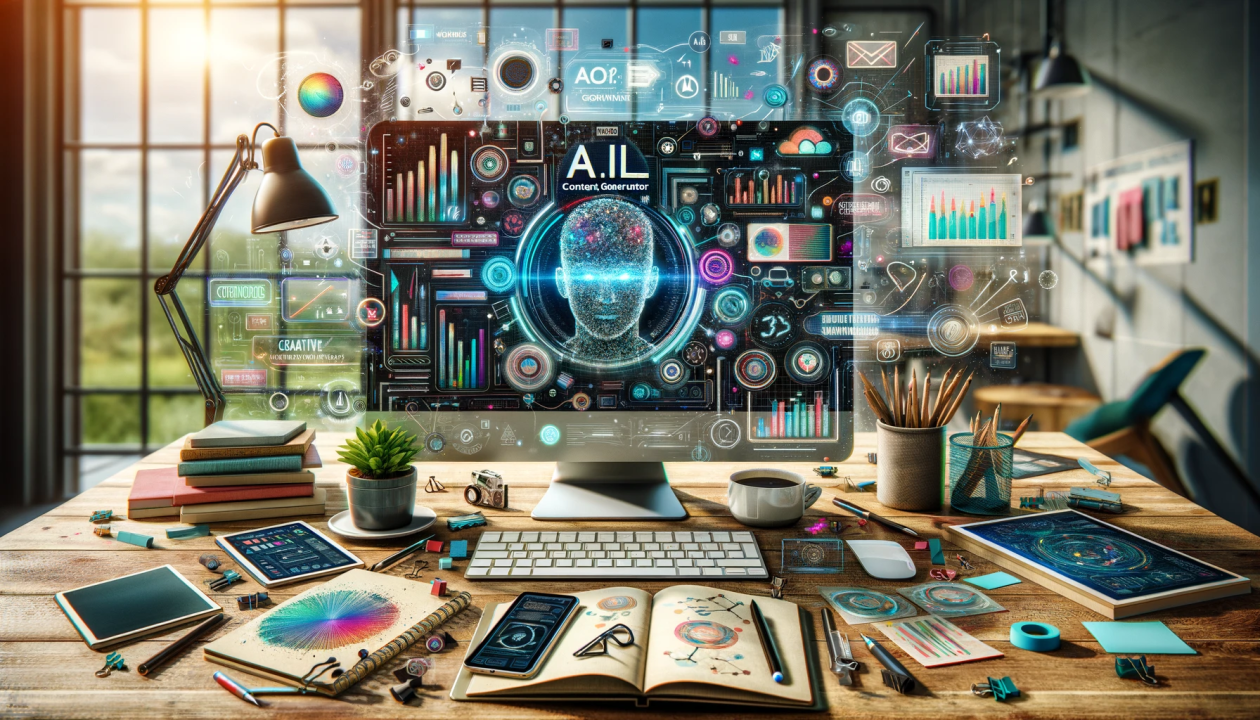Creating Music, Movies, and Art
In the age of digital transformation, artificial intelligence (AI) is no longer confined to the realms of data science, robotics, or business. Increasingly, AI has found its way into the creative industries, revolutionizing the way music, movies, and art are created. What was once seen as purely human endeavors—producing beautiful works of art, composing music, or crafting intricate storylines for movies—can now be enhanced and, in some cases, driven by AI. This blog explores how AI is transforming the entertainment industry, the potential opportunities and challenges it presents, and what the future holds for AI-driven creativity.
AI in Music: Composing Tunes with Algorithms
To start with, music has long been considered a deeply emotional and personal art form. Traditionally, creating music has involved human talent, emotion, and creativity. However, AI is now playing a significant role in the music industry, challenging our understanding of what it means to be creative. One of the most interesting applications of AI in music is its ability to compose original pieces of music using algorithms.
By analyzing vast amounts of data from previous compositions, AI systems can generate melodies, harmonies, and rhythms that are not only coherent but often indistinguishable from human-created music. For example, companies like OpenAI and Google have developed AI systems such as OpenAI’s MuseNet and Google’s Magenta, which can compose classical, jazz, and pop music after being trained on thousands of songs.
Additionally, AI is being used to assist musicians in the creative process. Tools like Amper Music and AIVA (Artificial Intelligence Virtual Artist) provide musicians and content creators with AI-generated soundtracks for various projects. By offering a starting point or background music, AI helps speed up the creative process and provides new sources of inspiration. Moreover, artists can collaborate with AI, using it as a tool to explore musical territories they may not have thought of otherwise.
But there is more to AI in music than just composition. AI is also used in music production, sound engineering, and remixing. For instance, platforms like LANDR use AI to automatically master tracks, providing high-quality audio production without the need for professional engineers. In essence, AI is democratizing the music industry by making high-quality tools available to both amateurs and professionals.

AI in Movies: The Rise of AI Filmmaking
Moving on to another creative industry, AI has also made significant inroads into the world of filmmaking. Traditionally, movies have been the product of human imagination, requiring skilled writers, directors, and actors to bring stories to life. However, AI is now being used at various stages of movie production, from writing scripts to editing footage and even generating special effects.
One of the most fascinating examples of AI in filmmaking is the use of AI to write movie scripts. In recent years, AI models like OpenAI’s GPT series have demonstrated the ability to write coherent narratives and dialogues. Although AI-generated scripts are not yet at the level of human screenwriters, they provide a useful starting point, especially for creating short films or experimental projects. For example, the short film “Sunspring” was written entirely by an AI, demonstrating the potential for AI to craft unique and unconventional narratives.
In addition to screenwriting, AI is also being used in video editing and post-production. Software like Adobe Premiere Pro and Final Cut Pro now incorporate AI-powered tools that help filmmakers automate tedious editing tasks such as color correction, scene transitions, and even facial recognition for faster video indexing. By automating these tasks, AI allows filmmakers to focus on the creative aspects of storytelling rather than the technical details.
Moreover, AI is revolutionizing special effects (SFX) and visual effects (VFX). Deep learning algorithms are now used to create lifelike CGI characters, simulate realistic environments, and even de-age actors. In fact, AI-powered de-aging technology was famously used in movies like “The Irishman,” allowing older actors to portray younger versions of themselves. As the technology improves, AI will continue to reduce the time and cost associated with creating complex visual effects.
AI and Visual Art: Redefining Creativity
Moving beyond music and movies, visual art is another creative field where AI is making a profound impact. Historically, creating art has been a deeply human experience, involving personal expression, emotion, and technique. However, AI is now challenging this notion by producing stunning pieces of visual art that blur the line between human and machine creativity.
One of the most well-known examples of AI in visual art is the use of GANs (Generative Adversarial Networks). These AI algorithms, developed by Ian Goodfellow and his team, consist of two neural networks—a generator and a discriminator—that work together to create new images. By training GANs on thousands of artworks, AI can generate entirely new images that resemble traditional paintings, sketches, or digital art.
Perhaps the most famous instance of AI-generated art is the portrait titled “Edmond de Belamy,” created by the AI art collective Obvious. In 2018, this AI-generated artwork was auctioned at Christie’s for a staggering $432,500, bringing AI-generated art into the mainstream. Since then, more artists and technologists have started exploring the possibilities of AI in the art world.
The visual Art :
Furthermore, AI is being used in the field of generative design, where algorithms create new designs based on pre-set parameters. For example, platforms like DeepArt and Runway ML allow artists to create unique and original works by inputting reference images and letting the AI reinterpret them in new ways. This opens up new avenues for artists, allowing them to explore styles and techniques they may not have previously considered.
But it doesn’t stop there—AI is also being used to restore and enhance old artworks. For instance, AI-powered algorithms can analyze centuries-old paintings and identify patterns to digitally restore colors and textures that have faded over time. In this sense, AI is not only creating new forms of art but also preserving the cultural heritage of the past.

The Intersection of AI and Human Creativity
While AI is clearly making an impact, there is an ongoing debate about whether AI can truly be creative. Can machines express emotions through art, music, or storytelling the way humans can? Some argue that AI is merely a tool, helping humans to expand their creative potential, while others believe that AI is capable of generating its own form of creativity, albeit different from human creativity.
To address this question, it is essential to recognize that AI’s role in creativity is still evolving. While AI can certainly produce impressive results, it lacks the intrinsic emotions, experiences, and subjective perspectives that drive human creativity. In this sense, AI is more of a collaborator or assistant in the creative process, rather than a replacement for human artists.
For instance, an AI may generate an impressive melody or create a striking visual piece, but it is ultimately a human who decides which aspects of the AI’s output to keep, refine, or discard. Moreover, many of the most exciting creative projects involving AI are those that involve human-AI collaboration, where artists use AI as a tool to push the boundaries of their craft. This collaboration allows humans to focus on higher-level conceptual thinking while AI handles more routine or repetitive tasks.
Challenges and Ethical Considerations
While AI presents many exciting opportunities for the entertainment industry, it also raises important ethical considerations. One of the primary concerns is intellectual property and authorship. Who owns a piece of AI-generated music or art? Is it the person who trained the AI, the AI itself, or the company that developed the technology? These questions have no straightforward answers and are currently being debated by legal experts and industry leaders.
Additionally, there is the issue of job displacement. As AI becomes more proficient at tasks like composing music, writing scripts, or generating art, there are concerns that human artists, musicians, and filmmakers may find themselves out of work. However, many experts argue that AI will not replace human creativity but will instead augment it, allowing humans to focus on more conceptual and strategic aspects of creative work.
Finally, there is the question of authenticity. Can AI-generated art or music truly be considered “authentic” if it is created by a machine? Some purists argue that art must come from human emotion and experience, while others believe that AI-generated works can have their own unique form of authenticity. Ultimately, the acceptance of AI in creative fields will depend on how society defines creativity and authenticity in the age of intelligent machines.

The Future of AI in Entertainment
Looking ahead, the future of AI in entertainment is incredibly promising. As AI technology continues to advance, we can expect even more sophisticated applications in music, movies, and art. For example, AI could be used to create fully interactive films where the storyline changes based on the viewer’s input, or music that adapts in real-time based on the listener’s mood.
Moreover, AI could play a key role in the democratization of creativity. By making high-quality creative tools more accessible, AI allows individuals from all walks of life to create professional-grade music, art, and films without needing formal training or expensive equipment. In this way, AI is leveling the playing field and empowering a new generation of creators.
In conclusion, AI is transforming the entertainment industry in profound ways, from composing music and generating visual art to writing movie scripts and enhancing special effects. While there are challenges and ethical concerns that must be addressed, the potential for AI to augment human creativity is immense. As artists, musicians, and filmmakers continue to experiment with AI, we are likely to see even more groundbreaking and innovative works emerge in the years to come. The fusion of human creativity and artificial intelligence promises to reshape the entertainment industry in ways we can only begin to imagine.

